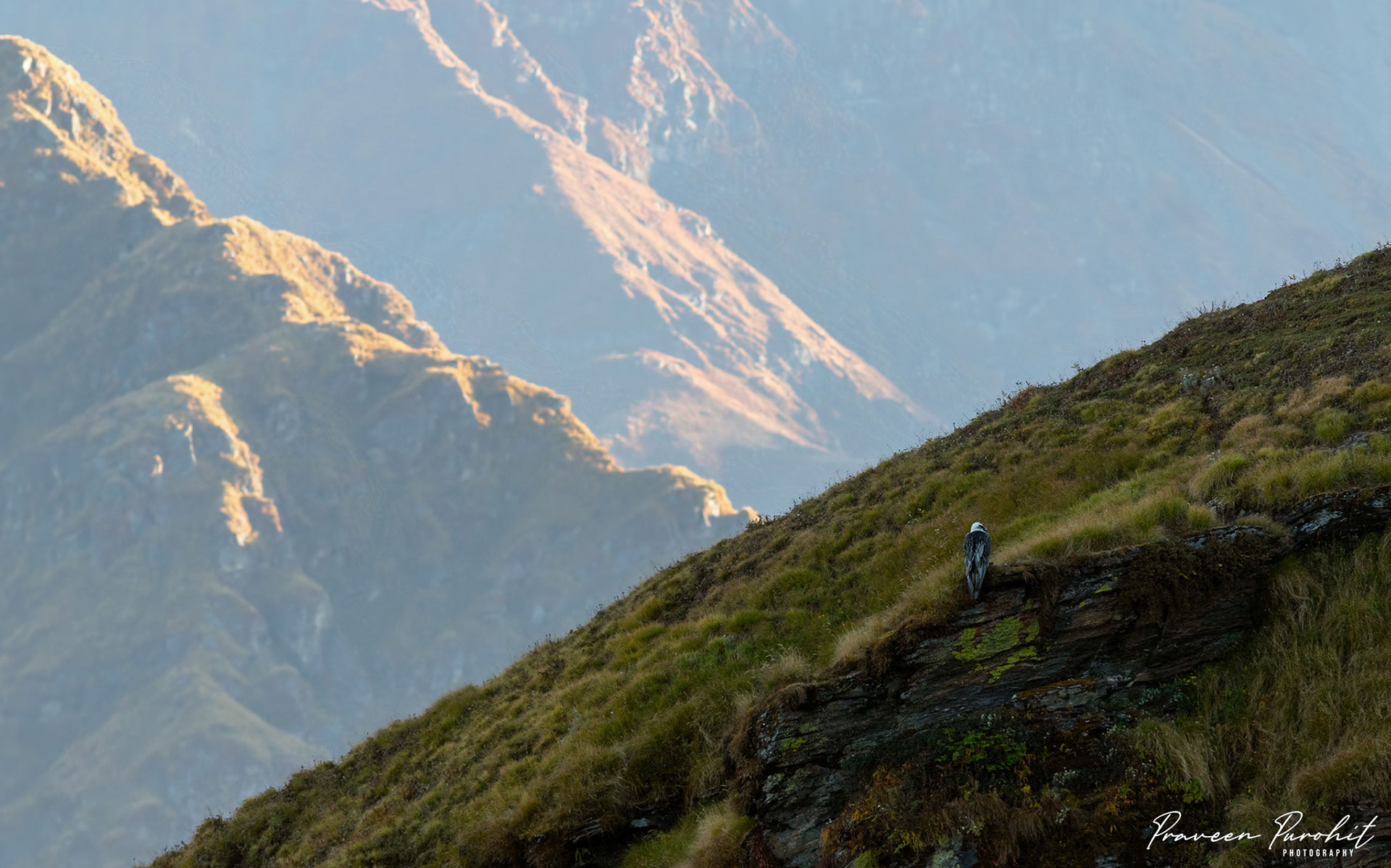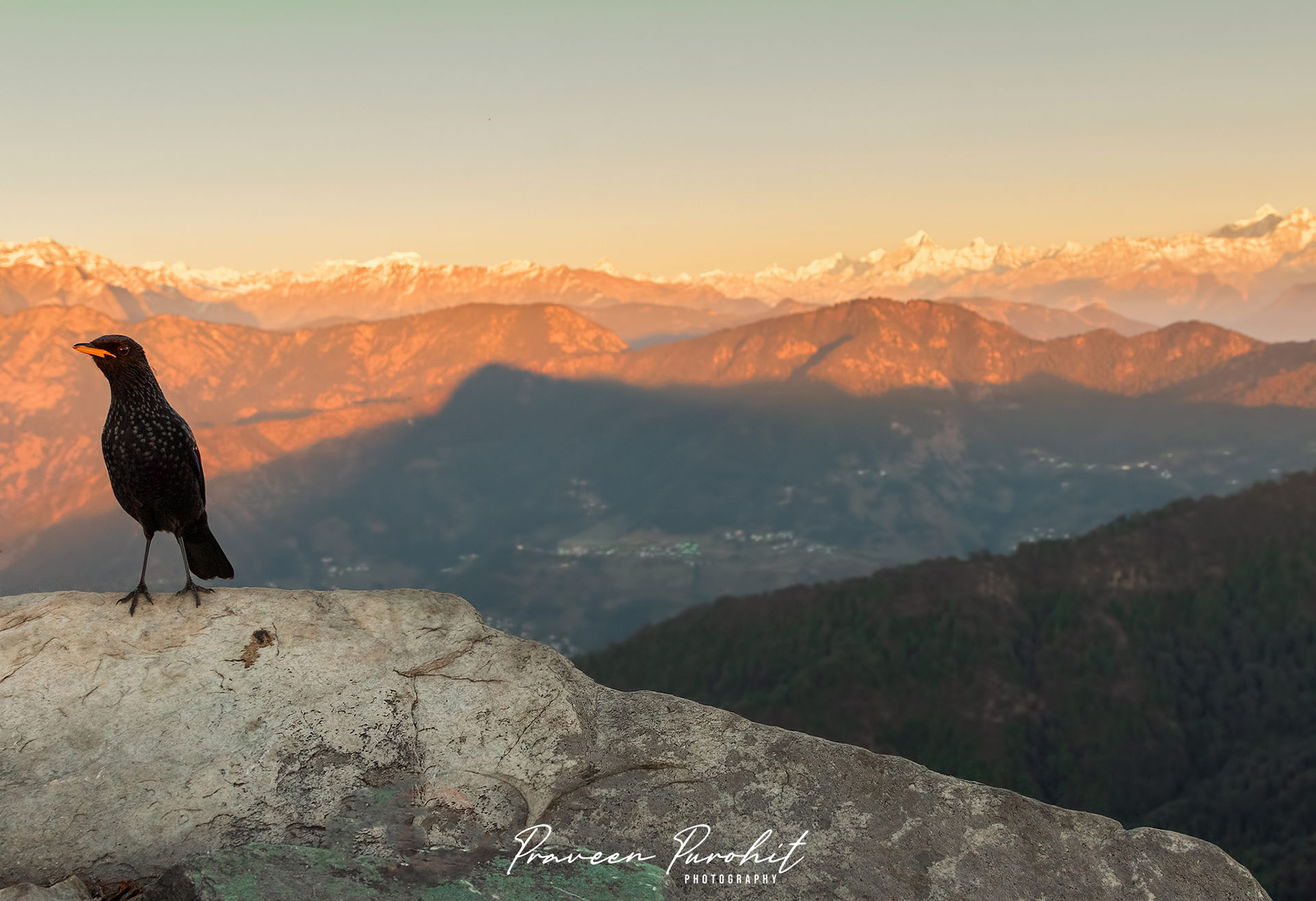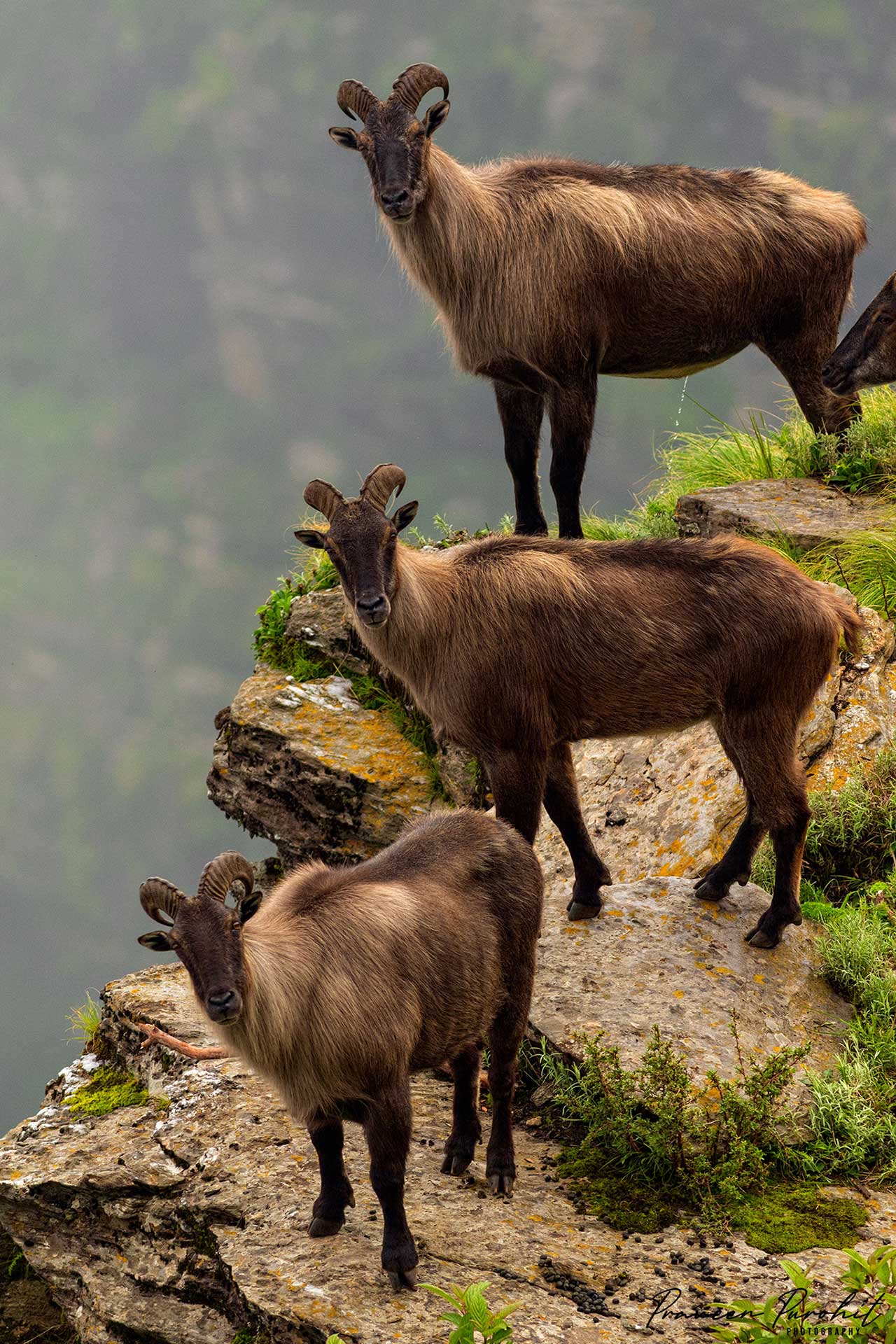“This is the first time that I am seeing a group of Sub-adult Male Tahrs,” I told Subodh, scampering down the steep slope to try and shoot them.
The month was June 2020, a lockdown was still in place and one was only allowed to travel in the morning post 5. Shops in Tungnath and Chopta were closed and though I really wanted to spend some nights in Tungnath, it was just not possible.
So the only other alternative was to do a one-day trip. I called Subodh to my home and that morning we left from Mansoona at around 3. Chopta is some 32 km from where I stay, and also it was drizzling this morning. As planned we reached Chopta at around 5, when dawn was just breaking in.
As expected, apart from some laborers working at a construction site, there was not a single soul in Chopta. The fear of Covid-19 was such, we were just ignored and looked upon as unwanted visitors. No one ready to even talk or feed us food or even water. The trek from Chopta to Tungnath was deserted, a very welcome sight for the wildlife photographer in me.
We sighted a number of Monals and Himalayan Tahrs that morning, but it was not until post-lunch when we saw this huge group of Sub-adult Male Himalayan Tahrs. The distance must have been around 500 to 600 meters, and since the valley was blanketed in clouds the visibility extremely low.
Approaching the Tahrs
Now the thing that one must know about Himalayan Tahrs is that the females and Juveniles are much easy to approach, but once the juveniles (male) become sub-adults and adults, they form their own group and are extremely difficult to approach. So although I was half a Kilometre away, I knew they would have to be approached very carefully. Also, they had probably seen us and I was pretty sure, at least one of them would keep a constant eye on us.
As we were discussing how to approach them, Subodh suggested that we use the cloud cover to our advantage and move when they cannot see us. That was a brilliant idea, and for the next 30 minutes or so, we only moved when a thick blanket of cloud masked our movement.
The last 200 meters was going to be the most challenging, as the only way of approaching them was via a slope that had no cover and had a direct line of sight. Any movement we do on that last 200 meters would be very easily seen and it would take them no time to disappear to the valley below.
But it was June end, and the grass on the Bugyal had grown to almost 3 feet. Normally an inconvenience, but today we used it to our advantage. For the next 150 meters or so, whenever the clouds enveloped the valley, we literally crawled with our bellies to the ground on a slope that had an inclination of at least 45 degrees or more. A feat that enabled us a successful approach without alarming them.
Taking the Shot
The advantage of using a slow and patient approach with wildlife is that, though they hesitate at first, they eventually become used to one’s presence and don’t mind the company. So even though we eventually were sitting at a distance of less than 20 or 30 feet, they simply didn’t mind us. We then were able to talk lightly, get up and move around without disturbing them.

We ended up spending between 30 to 40 minutes in their company, until one by one, they gradually disappeared to the valley below. This was the first time I was able to approach and shoot the males at such close distance and was an amazingly satisfying experience.
If you like the article, please do share and check out my other Wildlife and Landscape Photography articles here.



